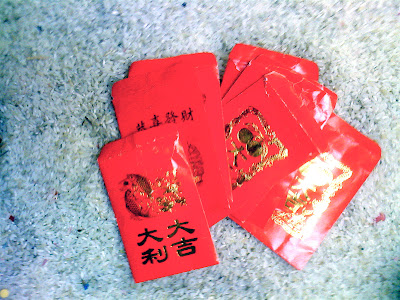As we ramped up to our snow delayed celebration of Chinese New Year last week, we were playing with rice in the sensory table. Some of the "tools" we included with the rice were familiar to everyone, such as small baskets. Some were only familiar to a few of the kids, like leisees, Chinese food carry out boxes, and chopsticks.
These are materials I associate with sustenance, celebration, tradition, and commerce, put together this way for the children to explore with at least 4 of their 5 senses (we discourage tasting for health reasons). I know, of course, at least something of what these items represent in the wider culture, but like the children, my knowledge is incomplete.

A few years ago, a mother of Chinese heritage rushed into the room and began pulling the chopsticks from where I'd stuck them in the rice, gathered them all in a bundle, and laid them down. "It's unlucky to stick chopsticks in rice like that," she explained. It's impossible to prevent the children from sticking the chopsticks into the rice, but since then, when I prepare this new year sensory table for the children, instead of making a chopstick forest, I put them in a velvet box that once housed a tea set brought to me by a relative who had returned from traveling in China. I hadn't really thought about it until this year, but I guess it's my way of accommodating this knowledge, a way of warding off the bad luck.

As I watched the children play, there was the usual scientific explorations of scooping and pouring, filling and emptying, stirring, sprinkling, piling, and digging, but I was particularly struck by the art they created with these materials: the boxes became houses, the chopsticks becoming trees or skis or flagpoles upon which red envelope flags fluttered. It was the kind of art we might call avant guard street art, I suppose; transient, participatory, and fleeting, an art form as old as play itself.

This is fundamental. This is how we construct meaning, taking raw materials and making from them artifacts that help us better understand our world. We always have. We study prehistoric man through the paint he applied to cave walls, for instance. We must make art to understand. And we must understand that art is more than applying pigment to a surface: it is how we construct meaning, something every bit as vital to being human as discovering some universal scientific or mathematical fact. In fact, it is often the only avenue to those discoveries.
At one level that's all we ever do in a play-based curriculum. In the broadest sense, we create art from everything we touch, coming to understand the world through constructing our own meaning from it.
How important is it that these girls know that dominoes is an ancient
Chinese game? That they play according to the rules?
When this structure ultimately fell, she said, "I knew that would happen."
In this "business" we all discuss art as a process, yet indeed, everything we do is a process whether or not we hang other labels on it. We make art and make art and make art, engaging in a process of divergent thinking, of manipulation, of invention.
It's the destiny of all human things to fall. We know that will happen.
We showed them how to play dominoes, but through the process of making art with them,
they practiced living with much greater truths than simply how to match up
arrangements of little dots.
I suppose there are some who would argue that this isn't art at all, wanting to narrow a definition that I seek to expand. To me art and play are synonyms.
We create dramatic scenarios, stages upon which we act out both the
imaginary and real.
How can anyone say this is not a piece of performance art?
History, science, math, literacy; these other terms we use to divide up education are merely the practical applications. Art-play is the process through which we understand.
Sometimes we make our art for others, constructing meaning that communicates, like Rex did when he surprised me by writing my name from letters he collected from around the outdoor classroom. That fits the narrow definition of art, the kind that's decorative or useful.
The art-play that connects us to our prehistoric ancestors is a purpose unto itself.
This aquarium was once a root farm from which we still occasionally harvest a carrot, but has
spent most of the school year evolving into something else, filling with rainwater.
For the past few weeks the 2-year-olds have been constructing something new with it,
adding rocks, toys, statues, and whatnot, then standing back to observe and
understand their handiwork before getting back to work on it.
I don't need to understand what this piece of art means, but it is clearly a work in progress,
a construction that evolves, that tells stories, that has by now a meaning far different
than mere water, rocks, and toys.
The narrow definition of art is one that says, "Today we are making sock puppets," that engages the brain within the limits of convergent thinking. It tells a story of right and wrong; beginning-middle-and-end.
Art-play is applying pigment to a surface, creating a new reality that helps us to finally understand the old one.
This is food.
Art-play is rearranging and re-purposing the hidebound or meaningless into something new, something never before seen, something true that has perhaps never before been true.
This is a pie.
This is a process we chose for ourselves; we invented together.
Then we stand back to admire and understand before moving on.
Art-play is the invention of ideas. It is the invention of meaning. It is applying pigment to a surface.
I put a lot of time and effort into this blog. If you'd like to support me please consider a small contribution to the cause. Thank you!